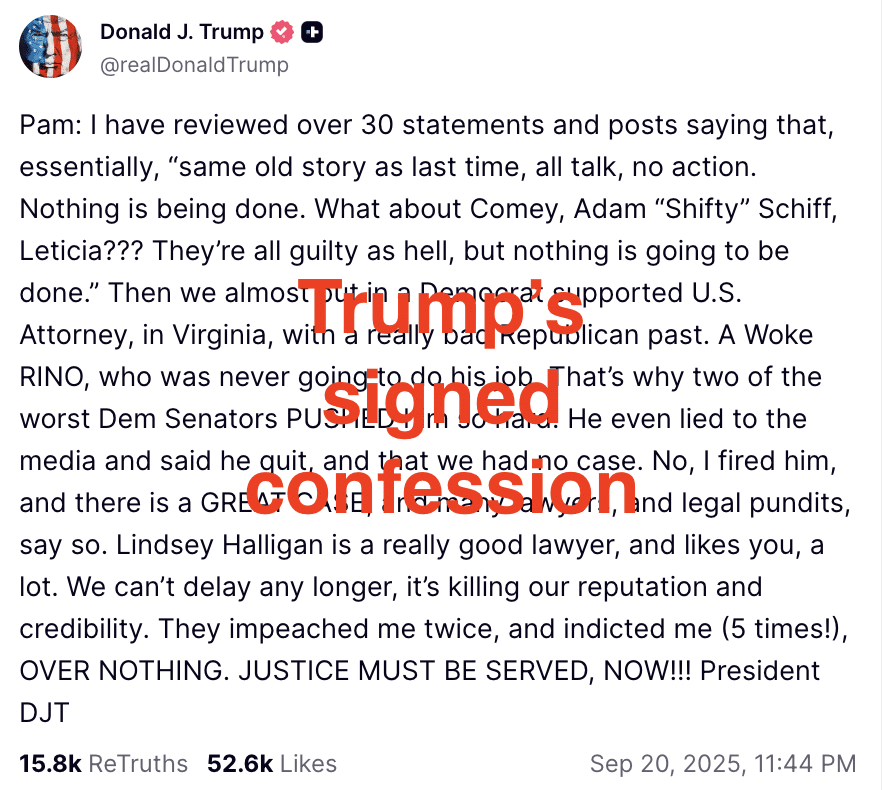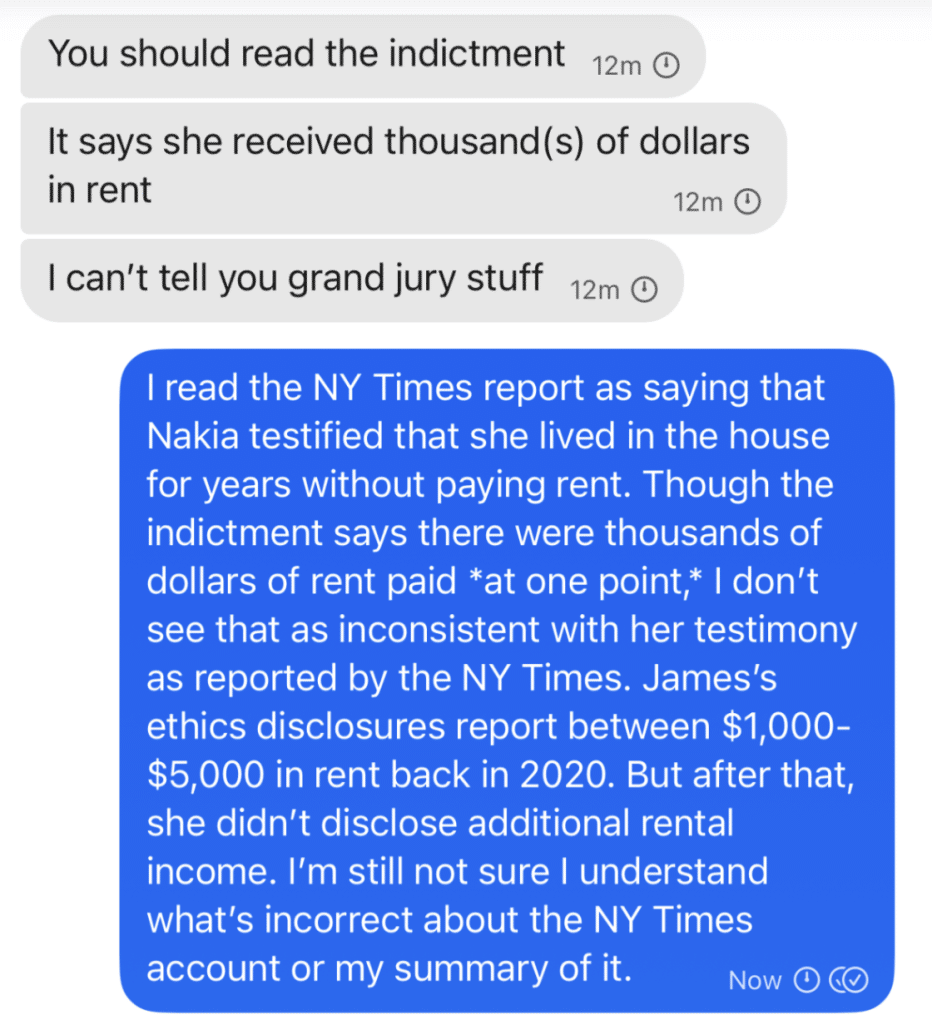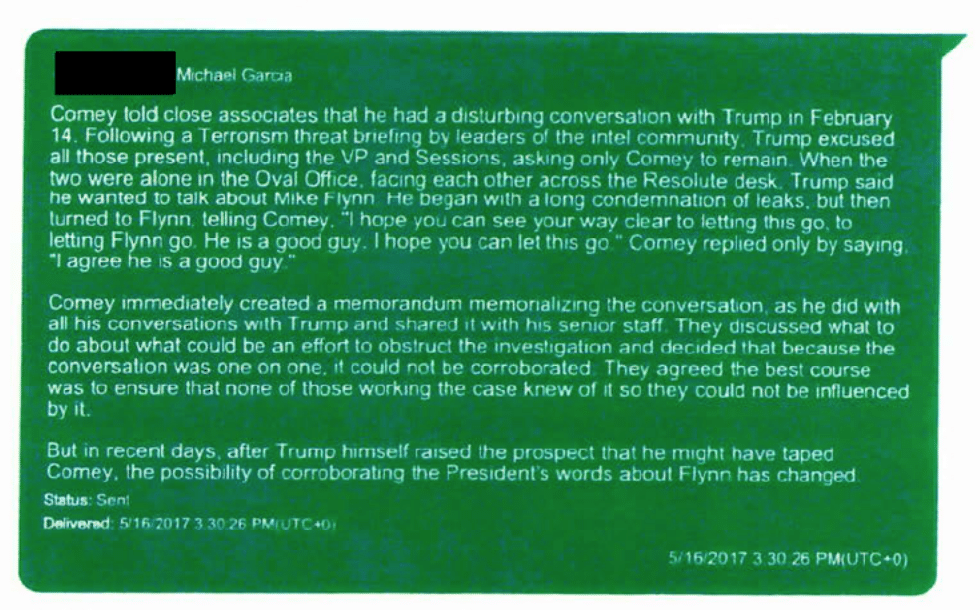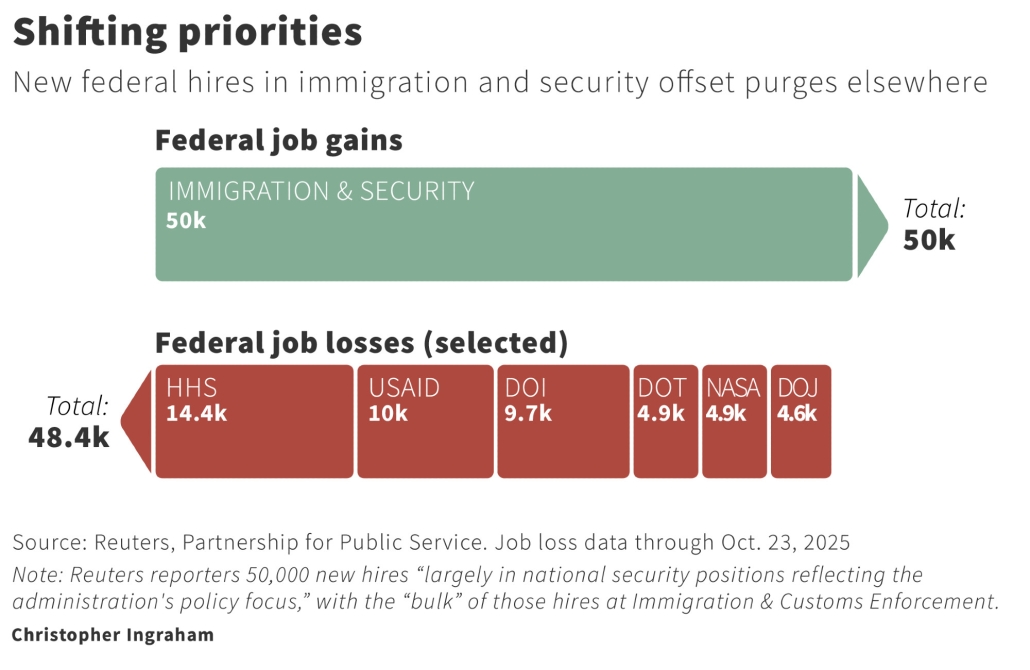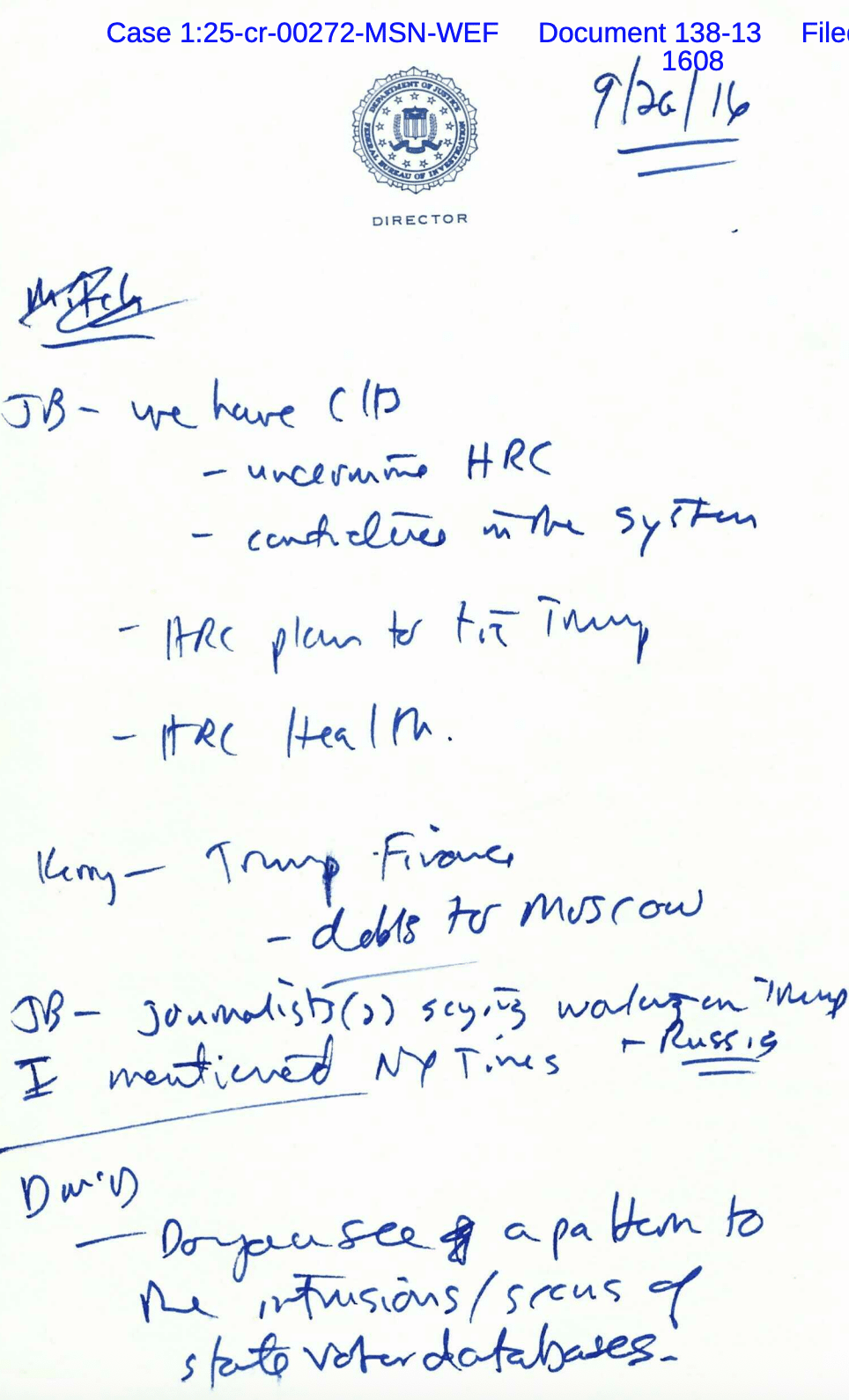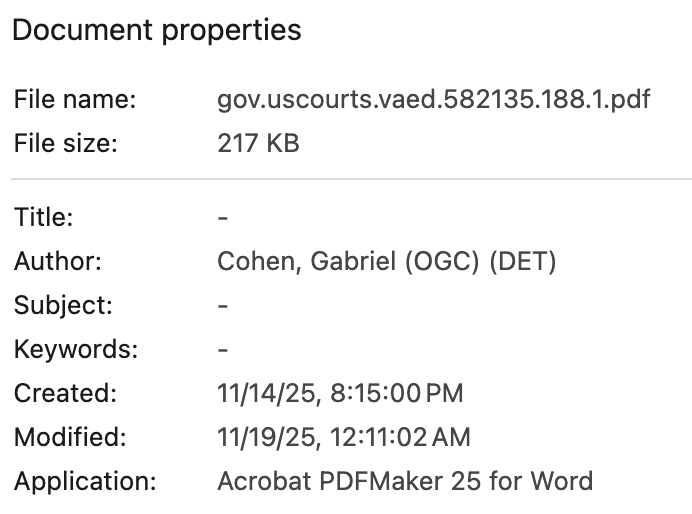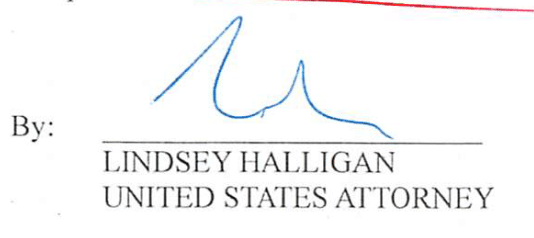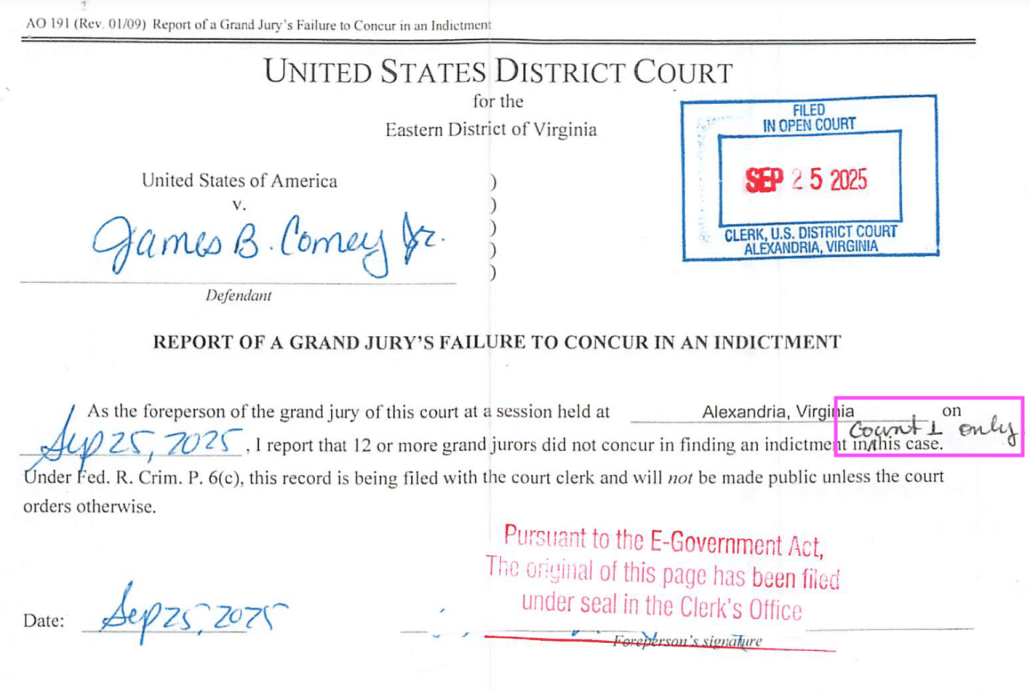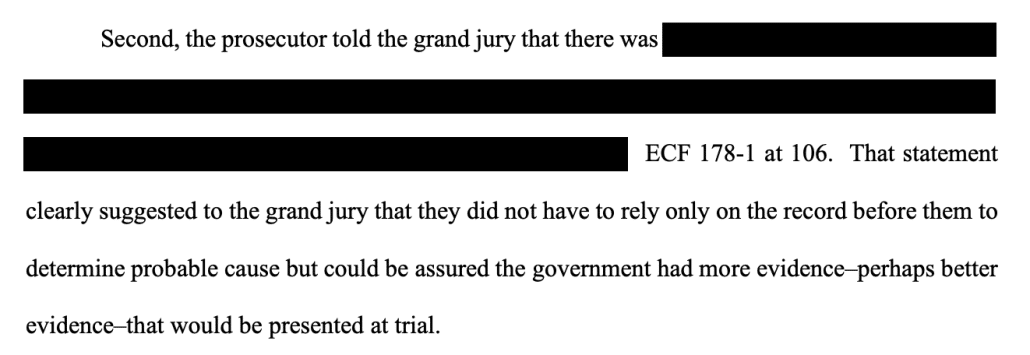Did the Comey Dismissal Render Kash Patel’s Grand Conspiracy “Just Someone Else’s Fantasy”?
There’s something missing from all the analysis (and this, from Politico, is quite good) of what might happen in the wake of Judge Cameron Currie’s dismissal of at least the Jim Comey indictment, and possibly even the Letitia James one: the way the dismissal might help or hurt Trump’s plans to charge a Grand Conspiracy in Florida.
[I regret to inform all of you, especially Savage Librarian, that in thinking about this during a bout of insomnia on Sunday I set all my thinking about the Grand Conspiracy to the tune of Styx’ The Grand Illusion.]
After all, if the ultimate goal was always to charge Jim Comey as part of some 20-person conspiracy indictment claiming a bunch of people arranged to have Donald Trump investigated as a ploy to undercut his first term and damage his 2024 election chances (yeah, seriously, that is the theory!), then the statute of limitations expiration was always a mere speed bump.
And in the same way that the dismissal without prejudice leaves unresolved the larger issue of illegal weaponization of DOJ, it also leaves a number of things the Loaner AUSAs might have wanted resolved unresolved.
Understand, two things that had no business being in the Comey indictment are absolutely critical to the Grand Conspiracy theory.
The Grand Conspiracy would start at least by August 9, 2016, when Peter Strzok responded to Lisa Page’s question, “He’s not ever going to become president, right? Right?!” by saying, “No. No he’s not. We’ll stop it.”
From there, Kash Patel’s conspiracy theory about the “Clinton Plan” CIOL would take over.
The Grand Conspiracy conspiracy theory is that the “Clinton Plan” was real, and that it should have given the FBI notice that Hillary had a plan to frame Donald Trump. [I should emphasize, not only don’t I endorse this theory, much of it is false and even more of it is batshit insane, but it nevertheless is being pursued by a Senate confirmed US Attorney in SDFL, Jason Reding Quiñones.] But, the Grand Conspiracy conspiracy theory goes, when Peter Strzok got notice of the Clinton Plan on September 7, he made sure it never got shared with the people beginning to investigate why George Papadopoulos knew of Russia’s plan to help Trump in advance because, the Grand Conspiracy conspiracy goes, it would have led him to open an investigation into Hillary rather than Trump.
Again, not true, insane, but nevertheless what has everyone from the Deputy Attorney General and FBI Director on down to the people unlawfully accessing raw data collected years ago aroused.
Fast forward to 2020. According to the Grand Conspiracy conspiracy theory, when Jim Comey told Lindsey Graham the “Clinton Plan” — as misleadingly described in a John Ratcliffe letter no doubt drafted with Kash’s help — didn’t ring a bell for him, he was lying to cover up how the FBI ignored warning signs about leads from Hillary.
Fast forward even further to 2025. When Kash found a burn bag of materials that had not been destroyed, including the “Clinton Plan” CIOL that might have been brought to the FBI Director’s Office with a bunch of other Durham investigation materials, he and Jack Eckenrode instead assumed that Comey partisans were trying to protect Comey and Strzok’s devious plot to ignore the CIOL back in 2016.
You need the “Clinton Plan” CIOL for the Grand Conspiracy conspiracy theory because that’s what makes their wildly misleading claims about the treatment of the Steele dossier in the 2017 Intelligence Community Assessment damning. The Steele dossier should never have been used at all, the Grand Conspiracy conspiracy theory says, because the FBI had notice that Clinton wanted to frame Trump, but instead Comey, with Brennan’s involvement (the Grand Conspiracy conspiracy theory claims), demanded its inclusion and based (the Grand Conspiracy conspiracy theory claims) the judgement that Russia wanted Trump to win on it, and when Brennan lied about all that in 2023 (the Grand Conspiracy conspiracy theory claims), he was trying to cover up this devious plot.
You also need Comey’s decision to release the memo he wrote up memorializing Trump’s corrupt attempt to shut down the Mike Flynn investigation and with it the communications with Dan Richman. You need that, plus Comey’s overt wish that by releasing the memo a Special Counsel might be (and was) appointed, because it ties (the Grand Conspiracy conspiracy theory claims) Strzok’s stated intent to “stop” Trump from becoming President to the investigation that dominated his first term. The Grand Conspiracy conspiracy theory turns the very legal release of a memo demonstrating Trump’s corruption into the crime of depriving Donald Trump of his right to fully exploit the presidency the Russian government gave him.
Now consider how charging Jim Comey with lying and obstructing fucked the Grand Conspiracy conspiracy plans.
First, the “Clinton Plan” CIOL.
EDVA successfully prevented Comey from explaining the problem with the “Clinton Plan” CIOL before attempting to charge him for lying about it. In his first discovery letter, Pat Fitzgerald noted that he had offered to meet with prosecutors on September 17.
In that regard, on September 17, 2025, I wrote the DOJ to ask for a meeting to discuss why the case should not be brought but never received a substantive response, much less a meeting.
And his motion to dismiss because Lindsey the Insurance Lawyer failed to actually get an indictment revealed that EDVA even refused to engage with the offer to toll the statute of limitations.
In fact, Mr. Comey’s counsel requested a meeting with the U.S. Attorney’s Office the week before the indictment was obtained and offered to toll the statute of limitations to allow for that meeting. A prosecutor in the Office told Mr. Comey’s counsel that the Office had been directed not to engage with defense counsel.
Prosecutors at EDVA — supposedly the good guys who got fired — didn’t want any truths Fitzgerald might share to fuck up their larger Grand Conspiracy conspiracy.
In one of his two replies for release of grand jury materials, Comey laid out how stupid all this is.
On September 30, 2020, Mr. Comey testified before the Senate Judiciary Committee about the Crossfire Hurricane counterintelligence investigation into alleged links between President Trump’s 2016 campaign and the Russian government. See Oversight of the Crossfire Hurricane Investigation: Day 3, Hearing Before the U.S. Senate Committee on the Judiciary, 116th Cong. (Sept. 30, 2020), http://bit.ly/4o2ekHb. The night before, he was sent a copy of the Ratcliffe Letter, described above, which purported to summarize the September 7, 2016 CIOL in one sentence. Mr. Comey was not provided an opportunity to review the September 7, 2016 CIOL at issue prior to his testimony.
[snip]
There is no evidence whatsoever that Mr. Comey received the CIOL at issue, much less that he reviewed it. The materials in discovery make clear that every day, numerous CIOLs come to the FBI addressed to the Director—from a variety of federal agencies in a variety of formats—and are routed to employees other than the Director. Because the Midyear Exam investigation had been closed for more than two months, there is no reason to believe that any CIOL related to Ms. Clinton would have been sent to Mr. Comey (and the government has produced no proof that it was). There is no electronic trail showing that Mr. Comey received the CIOL at issue. There is no paper trail showing that he received it. And there is no witness who says that Mr. Comey either received it or discussed it with him. Full stop.
This total lack of evidence is extremely troubling in light of credible press reporting that not only does a declination memorandum exist in this case,11 but it made clear that with respect to the CIOL in particular, a prior investigation found that Mr. Comey’s statement could not support a false-statement charge because there was insufficient evidence Mr. Comey had ever seen the CIOL.12 Ms. Halligan was also reported to have been advised by career prosecutors in that declination memorandum that “seeking the charges would violate DOJ policy, raise serious ethics issues, and risk being rejected by the grand jury.” Id.
In a footnote, he noted that this is all based on Russian disinformation.
10 Indeed, it appears this information was created by Russian intelligence, and did not accurately reflect particular emails. See Charlie Savage & Adam Goldman, ‘Clinton Plan’ Emails Were Likely Made by Russian Spies, Declassified Report Shows, N.Y. Times (July 31, 2025), https://perma.cc/F8AF-TLAF.
Worse still, a grand jury determined there was not probable cause that Comey lied about the “Clinton Plan” CIOL (though the Loaner AUSAs were trying to backdoor that as a crime in the obstruction charge).
Todd Blanche whisked the criminal investigation into whether Brennan lied in 2023 about his enthusiasm for the Steele dossier away to SDFL before a prosecutor wrote up a declination memo. Having arrived in Florida, US Attorney Jason Reding Quiñones sent out a bunch of subpoenas that everyone recognizes to be entirely performative (because they ask for highly classified things none of the subpoena recipients would have in their private possession).
But Blanche didn’t whisk this “Clinton Plan” CIOL off to Florida (which might have happened had Trump not demanded Pam Bondi intervene) before Lindsey the Insurance Lawyer did real damage to it.
And by bringing in Loaner AUSAs who actually care about their bar licenses, Blanche also did grave damage to their plan to use the Comey memos in the Grand Conspiracy conspiracy. The Loaner AUSAs attempted (or rather, fronted for James Hayes’ attempt) to use this investigation to get a filter team approved to turn the clearly privileged materials Miles Starr and Jack Eckenrode could have read because Kash Patel’s FBI turned off the filters applied under Bill Barr into crime-fraud excepted communications, at least ostensibly because they reflected a conspiracy to leak classified materials but in reality to serve their larger Grand Conspiracy conspiracy.
But instead of getting their filter protocol, the EDVA effort resulted in an order from William Fitzpatrick prohibiting the government from reviewing those privileged materials.
ORDERED that the Government, including any of its agents or employees, shall not review any of the materials seized pursuant to the four 2019 and 2020 search warrants at issue until further order of the Court;
And then Fitzpatrick issued an opinion effectively holding that DOJ violated Comey’s attorney-client privilege in 2020 by not permitting him to assert privilege.
However, the government never engaged Mr. Comey in this process even though it knew that Mr. Richman represented Mr. Comey as his attorney as of May 9, 2017, and three of the four Richman Warrants authorized the government to search Mr. Richman’s devices through May 30, 2017, 21 days after an attorney-client relationship had been formed. ECF Nos. 38 at 2 and 138-11 at 33 (Aug. 2019 Office of the Inspector General Report) (noting that Mr. Comey informed the Office of Inspector General that “the day after his removal, or ‘very shortly thereafter,’ he retained attorneys Patrick Fitzgerald, David Kelley, and Daniel Richman.”).
[snip]
At the time the Richman Warrants were executed, the government was aware not only that Mr. Richman represented Mr. Comey, but also that he maintained ongoing attorney-client relationships with other individuals, as the FBI materials regarding his resignation from Special Government Employee status noted his intention to represent a defendant in a federal criminal prosecution. Id. As a result, when the government obtained the first Richman Warrant in 2019, it was clearly foreseeable that Mr. Richman’s devices contained potentially privileged communications with numerous third parties, including Mr. Comey. Nevertheless, in 2019 and 2020, the government made a conscious decision to exclude Mr. Comey from the filter process, even though Mr. Comey, as the client, is the privilege holder, not Mr. Richman. The government’s claim at the November 5, 2025 hearing that Mr. Richman, at the time himself the subject of a criminal investigation and represented by separate counsel, was in a position to effectively assert Mr. Comey’s privilege is entirely unreasonable.
Fitzpatrick noted that had prosecutors obtained a new warrant to investigate Comey’s alleged leaks, it would be narrowly scoped. (He doesn’t say this, but it is the case that a new warrant would have prohibited any searches after February 7, 2017, the day Richman left the FBI, and therefore prohibited the review of the Comey memo exchanges even on the Richman side.)
If a new warrant had been sought by the government and issued by the Court, the Fourth Amendment would have required it to be narrowly tailored, authorizing access only to materials within a limited time frame and relevant to the new offenses under investigation. See Williams, 592 F.3d at 519. In addition, any new warrant would have imposed strict procedural safeguards to ensure privileged information was not reviewed by the prosecution team. As a result, the parameters of the 2025 search would inevitably have had a different and much narrower scope than the Richman Warrants. Faced with this prospect, the government chose to unilaterally search materials that were (1) seized five years earlier; (2) seized in a separate and since closed investigation; (3) that were never reviewed to determine whether the seized information was responsive to the original warrants; (4) that were likely improperly held by the government for a prolonged period of time; (5) that included potentially privileged communications; (6) did so without ever engaging the privilege holders; and (7) did so without seeking any new judicial authority.
And he described that DOJ had permitted Miles Starr to remain on the investigative team even after having been tainted by privileged communications.
Agent-3, rather than remove himself from the investigative team until the taint issue was resolved, proceeded into the grand jury undeterred and testified in support of the pending indictment. ECF 179. In fact, Agent-3 was the only witness to testify before the grand jury in support of the pending indictment. Id. The government’s decision to allow an agent who was exposed to potentially privileged information to testify before a grand jury is highly irregular and a radical departure from past DOJ practice.
The Fitzpatrick opinion was absolutely devastating for the Grand Conspiracy conspiracy, because it rendered Comey’s side of the Comey memo exchanges unlawfully seized.
And then Donald Trump DOJ responded the way Trump always does, by claiming bias. The Loaner AUSAs made a specious claim that Fitzpatrick’s comments about Lindsey the Insurance Lawyer’s misstatements to the jury reflected bias.
Federal courts have an affirmative obligation to ensure that judicial findings accurately reflect the evidence. Canon 2(A) of the Code of Conduct for United States Judges requires every judge to “act at all times in a manner that promotes public confidence in the integrity and impartiality of the judiciary” and to avoid orders that “misstate or distort the record.” Canon 3(A)(4) requires courts to ensure that factual determinations are based on the actual record, not assumptions or misrepresentations. Measured against these obligations and the rule of law, the magistrate’s reading of the transcript cannot stand.
And, that very same day, Lindsey the Insurance Lawyer lied to the NYPost in a bid to claim that Michael Nachmanoff himself is biased.
Interim US Attorney Lindsey Halligan suggested Wednesday that the Biden-appointed judge overseeing the criminal case against former FBI Director James Comey violated judicial conduct rules by asking if she was a “puppet” of President Trump.
District Judge Michael Nachmanoff asked Comey’s defense lawyer if he thought Halligan, the prosecutor who brought the indictment against the former FBI boss, was acting as a “puppet” or “stalking horse” of the commander in chief, during a hearing in an Alexandria, Va., courtroom.
“Personal attacks — like Judge Nachmanoff referring to me as a ‘puppet’ — don’t change the facts or the law,” Halligan exclusively told The Post.
By November 19, the day of these twin bullshit claims of judicial misconduct, the Comey prosecution in EDVA had done grave damage to the Grand Conspiracy conspiracy. But the plan was to discredit everything the judges did.
Except for Cameron Currie. They forgot to include Judge Currie, and her order dismissing the indictment without prejudice — making the indictment and everything that happened after that a legal nullity — left all of this wildly unresolved.
DOJ is on notice that they broke the law and that their Grand Conspiracy conspiracy theories are bullshit. But that notice has become a legal nullity, with no way for them to rebut it in EDVA.
I can tell you what the plan was. It was (as Charlie Savage recently laid out) to whisk this all away to Aileen Cannnon’s courthouse to make the crimes FBI committed go away.
I have no fucking clue what the plan is now, because I have no idea what the legal import is of these legal statements that have been rendered a legal nullity by the Currie order.
I do know, however, that when imagining what might come next, you have to consider that SDFL investigation, which may be why Comey’s statement predicted that, “I know that Donald Trump will probably come after me again.”
Update: In somewhat related news, the 11th Circuit has upheld the judgment and sanctions against Trump and Alina Habba for their frivolous lawsuit very much paralleling the Grand Conspiracy theory.
Meaning, Jim Comey has beaten Trump in court twice in a holiday-shortened week.



